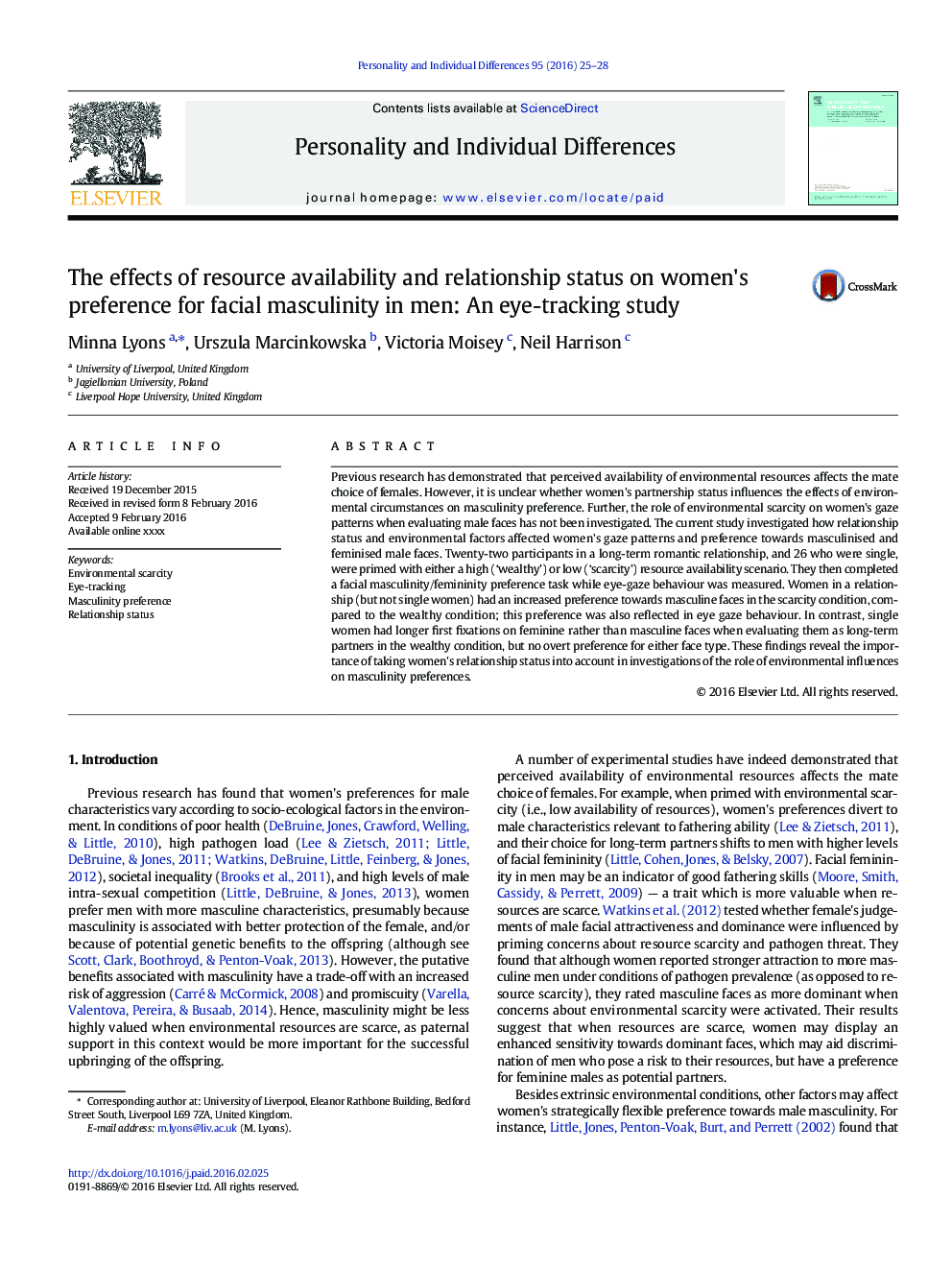| Article ID | Journal | Published Year | Pages | File Type |
|---|---|---|---|---|
| 7250208 | Personality and Individual Differences | 2016 | 4 Pages |
Abstract
Previous research has demonstrated that perceived availability of environmental resources affects the mate choice of females. However, it is unclear whether women's partnership status influences the effects of environmental circumstances on masculinity preference. Further, the role of environmental scarcity on women's gaze patterns when evaluating male faces has not been investigated. The current study investigated how relationship status and environmental factors affected women's gaze patterns and preference towards masculinised and feminised male faces. Twenty-two participants in a long-term romantic relationship, and 26 who were single, were primed with either a high ('wealthy') or low ('scarcity') resource availability scenario. They then completed a facial masculinity/femininity preference task while eye-gaze behaviour was measured. Women in a relationship (but not single women) had an increased preference towards masculine faces in the scarcity condition, compared to the wealthy condition; this preference was also reflected in eye gaze behaviour. In contrast, single women had longer first fixations on feminine rather than masculine faces when evaluating them as long-term partners in the wealthy condition, but no overt preference for either face type. These findings reveal the importance of taking women's relationship status into account in investigations of the role of environmental influences on masculinity preferences.
Keywords
Related Topics
Life Sciences
Neuroscience
Behavioral Neuroscience
Authors
Minna Lyons, Urszula Marcinkowska, Victoria Moisey, Neil Harrison,
